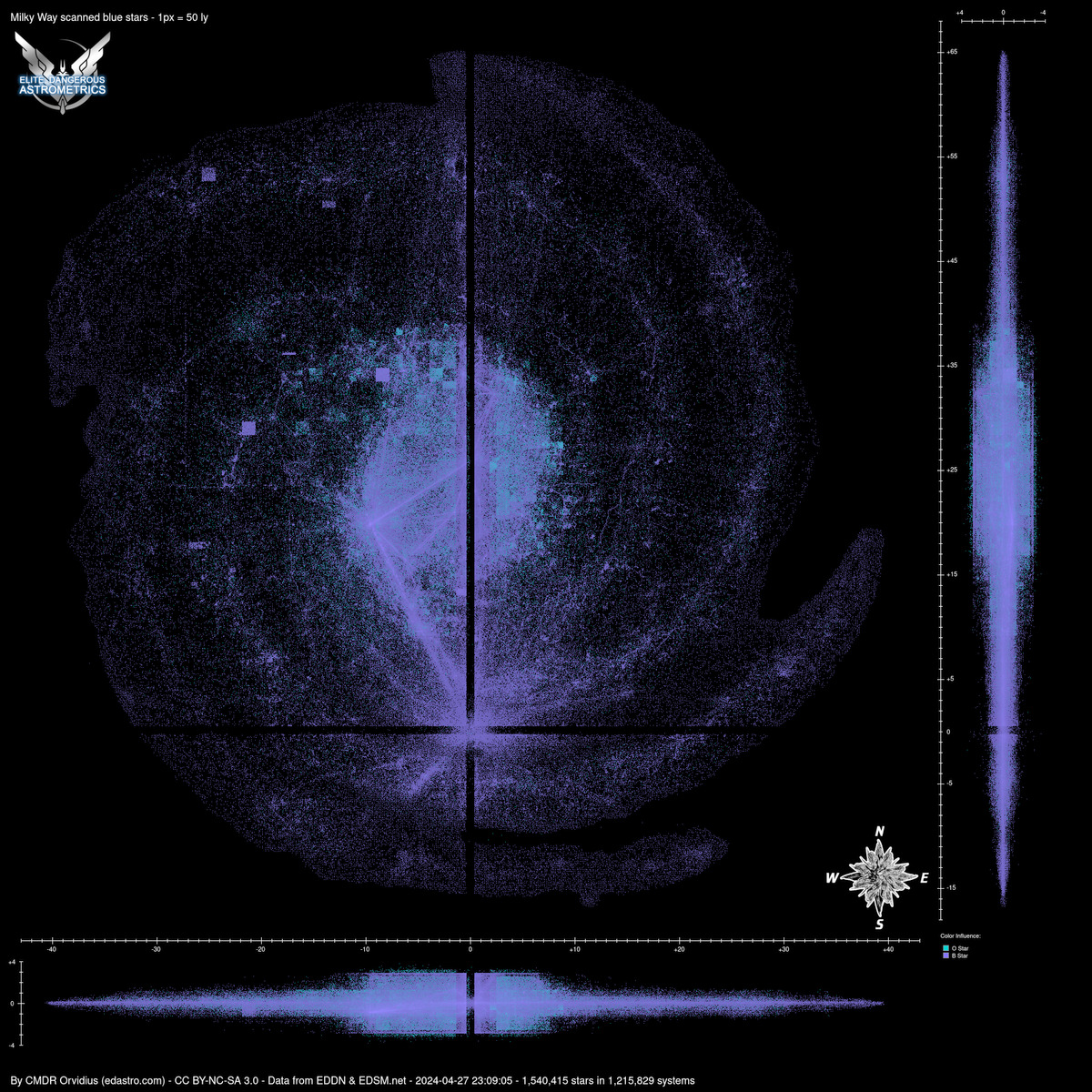Rather irrelevant to everyone else, but I managed to animate my jump history, through to a few days ago. The video displays 60 jumps per second (60 fps), skipping over jumps that would be within the same pixel when rendered at 4k. The video was downscaled to 1080p before sending to youtube (though I probably didn't need to do so). It plays through over 18k jumps in about 4 minutes.
I wish it were possible to open that capability up to everyone, but this is a pretty heavy process on the server that takes some time, plus it's using the personal EDSM API keys and working around the API rate limiting, to pull 7-day chunks of travel history. I have that latter part split out into a daily "what's new?" sort of lookup.
Anyway, I thought I would share the pure geekery that's continuing over here. I always think it's cool when you can go beyond a game, and create a meta-game on top of it.
[video=youtube;tgFfzsMcuH4]https://www.youtube.com/watch?v=tgFfzsMcuH4[/video]
I wish it were possible to open that capability up to everyone, but this is a pretty heavy process on the server that takes some time, plus it's using the personal EDSM API keys and working around the API rate limiting, to pull 7-day chunks of travel history. I have that latter part split out into a daily "what's new?" sort of lookup.
Anyway, I thought I would share the pure geekery that's continuing over here. I always think it's cool when you can go beyond a game, and create a meta-game on top of it.
Last edited:

